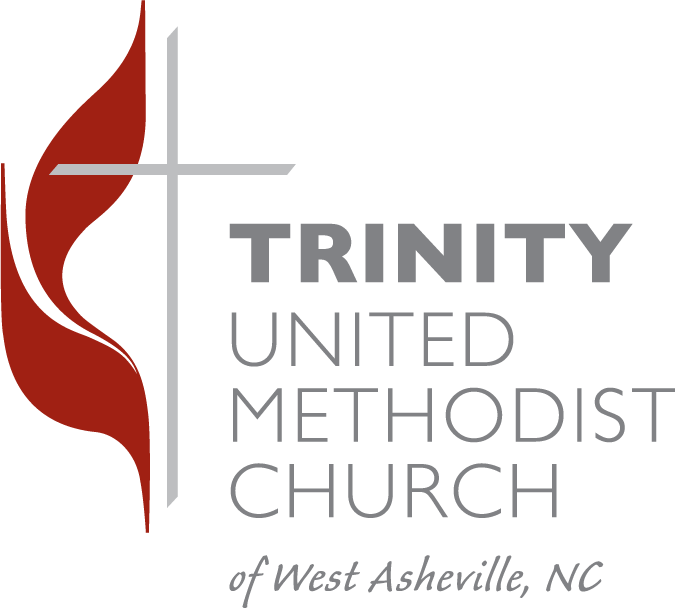Trinity member Phillip Gibson shares his thoughts about our church, its architecture and its history.
In every conversation I have about Trinity United Methodist Church, eventually, the discussion steers to the architecture. Even after two years, I continue to be awestruck by the building materials and the masterful way they are assembled, creating an environment that is spiritually moving. And as a result, I have asked questions about builders, architects, and craftsmen. There is a great library in the church of many things but, I eventually went to the North Carolina Room at Pack Memorial Library to get answers. So if you are interested in the history of the church, here is just a smidge about the current building, the fourth church to be built on our property.
The plans to build the existing building was in 1926. The previous church was said to be too small and was demolished to make way for new construction. On March 3, 1926 the contract to build a new church was granted to a construction company from Charlotte, NC. The company was named Palmer-Spivey. The architect of our church was Victor Winfred Breeze who, at the time, had a company named Thrower, Breeze and Company. They had an office in Asheville and Charlotte. A news article in the Asheville Citizen stated that Mr. Breeze personally oversaw the construction of our church building.
The permit to build the existing church was issued on Tuesday April 20, 1926. The permit was for $100,000 but, the eventual cost of building the church was $155,000. The structure was to be built of limestone and brick, trimmed in limestone. The edifice was to house both auditorium and Sunday School room. And, construction was to be “rushed to completion as soon as possible.” The church had 889 members that were meeting in the basement of the annex building, which was still under construction.
The pews of the church were donations of Dr. and Mrs. J.C. Anderson.
The lighting fixtures were donated by Mr. and Mrs. W. S. McRary (sp?)
The pulpit furniture was donated by Arthur Patton.
The communion table was presented by Mrs. H. B. Poosey.
The music was furnished by the choir of the church which had 21 members.
This information came from two articles in Asheville on May 29, 1927 and April 21, 1926.
Our stained glass windows were designed, created and installed by A. W. Klemme of High Point Glass and Decorative Company of High Point, NC. This company began in 1905 but is no longer in business. The next time you look at the stained glass windows, notice the continuity of the panels as they flow left to right or right to left. Do you see the sky and clouds? This was a signature look of Klemme. Each window is essentially one sheet of glass that was cut and assembled to create that scene.
The church was completed in 1927 and became the main meeting space where businesses and business leaders met to plan events and development of West Asheville.
One major historical event that our building played a role in was the 1931 funeral of Asheville Mayor Edward Gallatin Roberts – the largest funeral in Asheville history. Mayor Roberts was the mayor during the Great Depression. And while he was a member of the West Asheville Presbyterian Church, our new building was much larger and chosen because of its size. Roberts was well loved. He was an advocate for the rights of black people and women. One of the seven ministers that preached at Roberts’ funeral was black minister W. O. Hamilton of the New Calvary Church in Asheville. Remember, this was in 1931.
I hope this has been new and interesting to you. I know that I now walk through the building with more admiration of the people who built this church and its members who allowed it to serve as a major resource to the development and business community of West Asheville.
